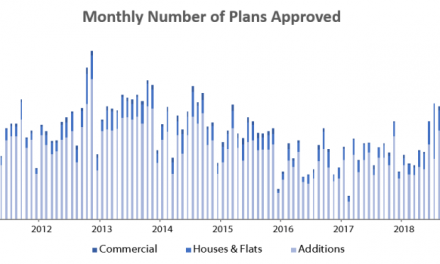
Building plans through the roof
The number of building plans completed in April 2012 shot up to 225, compared to a mere 53 in March, figures from the City of Windhoek shows.
The increase was reflected in all categories with additions, including walls and pools increasing from 48 to 170, commerce and industry from 1 to 7, while houses and flats increased from 4 to 48. The increase in April marks the largest quantity of building plans completed since July 2010.
Capricorn Investment Holdings (CIH) Economist, Patrick Britz, says it is unclear whether the increase in the number of buildings completed will be sustained going forward as the City of Windhoek has struggled to cater for the increasing demand for housing in the capital in recent years.
He adds that the under supply of residential units has undoubtedly contributed to the increasing cost of housing which is being seen throughout Windhoek.
At 170, additions to buildings make up the highest contribution to the increase while the number of houses and flats (48) completed in April is relatively high compared to recent figures, and is more than the combined total of houses completed in the first three months of 2012.
Similarly, the value of Windhoek based buildings increased significantly from March to April, from N$29.3 million to N$149.1 million. At N$72 million, the value of houses and flats completed in April contributed significantly to this increase.
“This makes the value of buildings completed in April the highest in over three years,” Britz said. The last time the value of buildings completed breached the N$150 million mark was in March of 2009, where the total value of completed houses reached N$216 million.
But despite the big increase in the number and value of buildings completed, the number of building plans approved increased marginally in April to 189 from 186 in the previous month representing a 21% decrease on the number of plans approved in April last year.
Britz says this year-on-year decrease adds little hope to the notion that land delivery will speed up in the near future.
“The delivery of serviced land for building falls under the responsibility of the municipality, which has been notoriously slow at providing serviced land, not only because of the cumbersome bureaucratic process but also because of financial constraints.
“Last year, the municipality approved a pilot project involving Public-Private Partnerships (PPPs) with the aim of bringing in private companies who will provide finance and undergo the servicing of land under the supervision of the municipality. As such, the delivery of land and thus buildings and housing could potentially speed up depending on the success of the pilot PPP project.”












































